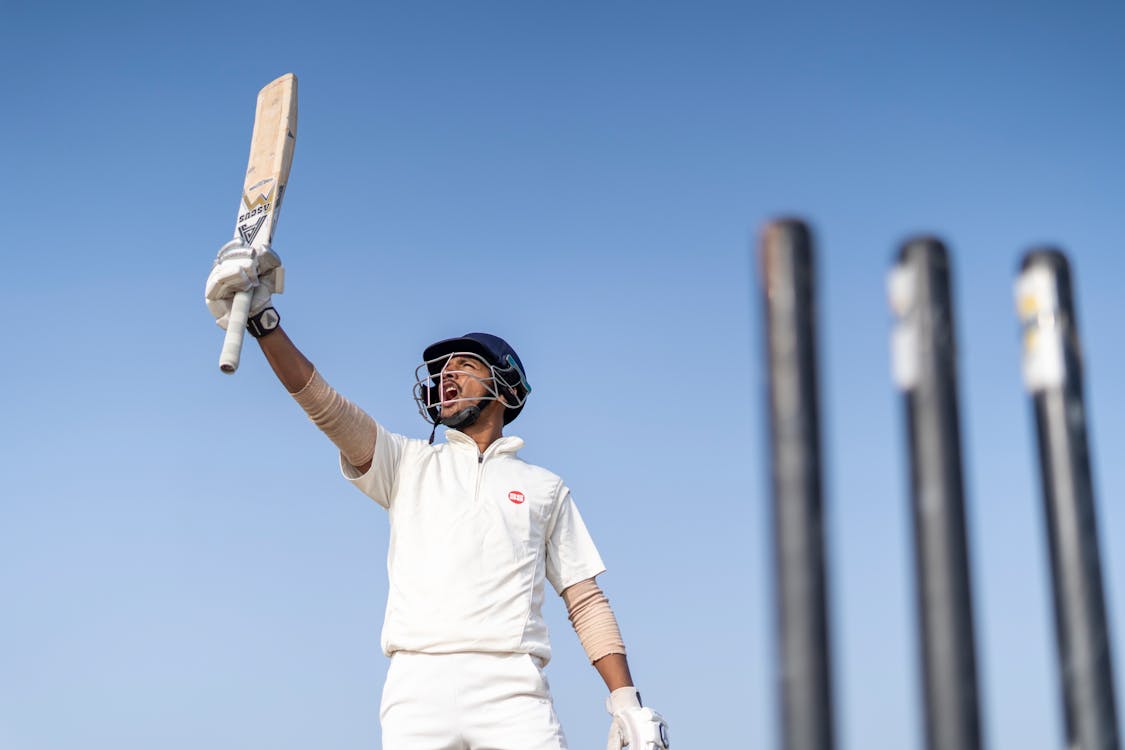Introduction
Cricket, often called the "gentleman's game," is a sport beloved by millions worldwide. It combines athleticism, strategy, and teamwork in a unique format that spans several hours or even days. Here’s a comprehensive guide on how to play cricket, step by step, covering the basic rules, equipment, positions, and gameplay.
Equipment Needed
1. Bat: A cricket bat is typically made of willow wood and has a flat striking surface on one side and a handle on the other.
2. Ball: A hard, cork-centered cricket ball covered in leather.
3. Stumps: Three vertical wooden posts with two wooden bails resting on top, collectively known as the wicket.
4. Pads: Protective gear worn by batsmen to protect their legs from the ball.
5. Helmet: Protects the head and face of batsmen and fielders close to the batsman.
6. Gloves: Worn by the batsmen for better grip and protection.
7. Thigh pad, chest guard, arm guard: Additional protective gear for batsmen.
8. Fielding gear: Gloves and pads for wicketkeepers and some fielders.
Basic Rules and Setup
1. Teams: Two teams with eleven players each.
2. Toss: Before the match begins, a coin toss determines which team will bat or bowl first.
3. Pitch: A rectangular strip of closely mown grass with wickets at each end.
4. Innings: Each team has a turn to bat and bowl. An inning consists of two halves—batting and bowling.
Playing the Game
Batting
1. Opening batsmen: Two players from the batting team take positions at the crease.
2. Bowling: A bowler from the opposing team delivers the ball towards the batsman.
3. Scoring runs: Batsmen score runs by hitting the ball and running between the wickets or by hitting boundaries.
4. Dismissals: Ways a batsman can be out include getting bowled, caught, run out, stumped, or leg before wicket (lbw).
Bowling and Fielding
1. Bowling: Bowlers aim to dismiss batsmen by delivering the ball accurately and with variations in speed and spin.
2. Fielding positions: Fielders are strategically placed around the field to catch the ball or prevent runs.
Scoring and Winning
1. Runs: Scored by batsmen running between the wickets or hitting boundaries (four or six runs).
2. Extras: Runs conceded by the bowling team due to no-balls, wides, and byes.
3. Winning: The team with the most runs at the end of both innings wins the match.
Advanced Aspects
1. Formats: Cricket is played in different formats—Test matches (5 days), One Day Internationals (ODIs), and Twenty20 (T20) matches.
2. Strategies: Teams strategize based on the game situation, pitch conditions, and opponent strengths.
3. Umpires: Officiate the game, making decisions on dismissals, runs, and rule violations.
4. Review system: Introduced in some formats to allow teams to challenge umpire decisions.
Conclusion
Cricket is a sport rich in tradition and strategy, offering a blend of individual skill and teamwork. From the basics of equipment and rules to the complexities of strategy and gameplay, mastering cricket requires dedication and practice. Whether played casually in a backyard or professionally in international stadiums, cricket continues to captivate players and fans alike with its unique charm and excitement. Understanding these fundamentals is the first step towards enjoying and appreciating the nuances of this timeless game.


.jpeg)
.jpeg)
